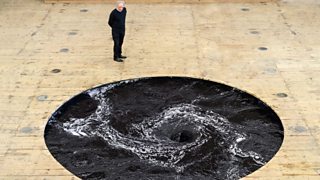How companies use colour to sell to us
Colour can have a psychological, physiological and emotional impact, affecting our moods and even our blood pressure. It’s no wonder that branding consultants view it as such a powerful tool to lead us towards their products.
To mark the programme Owning Colour, in which designer Wayne Hemingway explores the artistic, commercial and cultural impact of colour in society, we reveal how it can be harnessed to influence our behavior.

Red
Lucky in China, and a bridal and fertility symbol in the East, red is the colour of love, anger and action. It actually raises the blood pressure and generates excitement and power – it has the longest visual wavelength, so it makes a huge impact in a room. Red actually appears to be moving forward, which explains why it’s used as an 'alarm' colour. It adds urgency, youth and vigour, and lends appeal to drinks, food and services aimed at the young. It’s also used for sales and clearance sites – ‘Quick, buy it now, when it’s gone it’s gone!’


Black
There’s an enormous sense of mystery around the colour black. It’s a challenging colour for brands to use in the West because of its association with death. But it is also the colour of luxury brands: think glossy black limousines, designer watches, and pints worth waiting for! There’s an exclusivity and a premium side to black, an aspirational element, and it’s very grown up. “I don’t need to try, I’m just quality.” It’s very powerful and sophisticated when used as a primary colour in branding.


Blue
We have the Egyptians mining lapis lazuli to thank for blue, and on a more general level we’re immersed in it. It reconnects us with the earth and our place in it – the sky, the sea, the eyes of a newborn baby. Blue is seen as a reassuring, calming, tranquil colour. Blue light in public places has even been shown to reduce criminal activities. It’s the colour of reliability which is why it’s associated with banks and corporations. We trust it because it’s a constant in our lives, and we also associate it with the emergency services – the cool competence of a nurse. And by the way, if you’re in the dock, wear a blue dress or a blue suit. You’re more likely to get off. But don’t say we told you.


Green
Green is an environmental colour: it’s calming and is used to give the perception of a product being environmentally friendly. Green spaces around our houses increase their value, and hospital patients who look out on green views are nicer to their nurses. We have an emotional response to it as it reconnects us to our natural environment, so when we’re picking between two products and one looks greener, we’ll associate that with having a beneficial environmental effect. But beware of greenwashing – you might be looking at a product that’s switched to green to recover from an environmental disaster. It’s also associated with growth and prosperity – the upward line on the FTSE index is green, and it’s “Go!” on a traffic light.


Purple
Purple is loved by teenage girls, Prince, and chocolate manufacturers. Purple can be overwhelming to live with. As we grow up we move away from purple, but women come back to it as they get older, possibly because it works so well with grey. It’s associated with valuable things – purple dye used to be more expensive than silver and it was worn by royalty. Purple’s been at the centre of a long-running squabble between chocolate companies over whether or not one of them can own the colour. Psychologically it is seen as a thoughtful, 'deep' colour, associated with wealth, luxury and intelligence. What a colour!
So next time you’re strangely drawn to that bar of chocolate or brand of washing powder in the supermarket, just stop and think what it is that’s attracting you – is it really what’s on the INSIDE of the packet?

Listen to Owning Colour as Wayne Hemingway explores the artistic, commercial and cultural impact of colour in society and some of the intense legal battles that surround it.
More from BBC Radio 4
-
![]()
Owning Colour
Designer Wayne Hemingway takes an in-depth look at five colours.
-
![]()
Vantablack
A colour is so dark that you will lose your bearings when you look at it.
-
![]()
Managing your money
Tips to make your money go further, save more successfully and avoid shopping pitfalls.
-
![]()
'I can hear colours'
Neil Harbisson demonstrates how his antenna allows him to hear colours.




